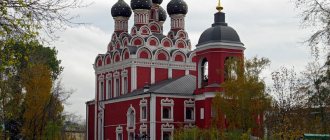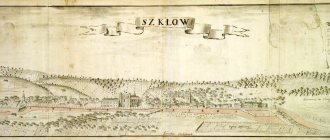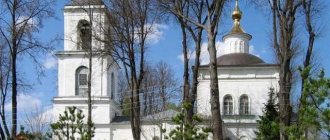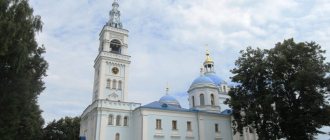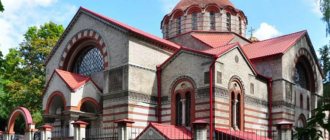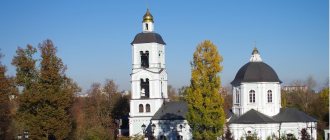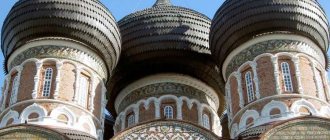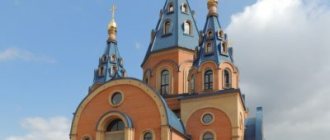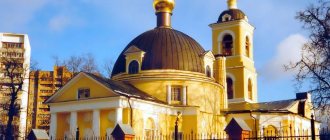Origin of the icon
The name of the icon comes from the name of the part of Constantinople where the temple with this shrine was once located. Not only Constantinople, but also the whole of Byzantium was under her protection. The chronicles of those years tell how in 626, through prayers offered before the icon, the Most Holy Theotokos saved the city from the invasion of invaders. Many centuries later, already in Russia, its miraculous power will be revealed during the cholera epidemic in 1830. She saved all the inhabitants of Kuzminki, where she was, and all the inhabitants of the surrounding villages from a terrible disease.
This icon was not ordinary. Its creation is attributed to the Evangelist Luke, a contemporary and one of the apostles of Jesus Christ. The icon was in relief and made using a unique wax-mastic technique. Its peculiarity was that crushed particles of the relics of saints were added to the wax. An image made in this way is called a reliquary.
Press News Photo gallery For children Services Information home At different times, three documented churches successively existed in Kuzminki .
The first of them was built in 1716 by the Stroganovs, who received a blessed charter, that is, permission to build it. That church was wooden, consecrated in honor of the family shrine of the owners of Kuzminki - the Blachernae Icon of the Mother of God and had a chapel of Alexander Nevsky. It was after this church that the entire estate received its name – the village of Vlahernskoye. The church was destroyed by fire in 1732, and then a new Church of the Blachernae Icon of the Mother of God, also wooden, was built in its place. She, in turn, died from “fiery ignition” on November 18, 1758. The current church is the third in a row . It was built in two stages. In 1759-62, a church building was built, as well as a separate wooden bell tower, the author of which was Zherebtsov. However, by 1779 the church building was in need of repair. Prince M.M. Golitsyn soon rebuilt the building in the forms of mature classicism and built a new bell tower instead of the old one. These works were carried out according to the design of the architect R. Kazakov in 1784-85. In the church there was a family heirloom - the Blachernae Icon of the Mother of God (Hodegetria), dating back to the 7th century AD. One of the most revered Greek icons in Moscow. They were brought to Constantinople as a gift to the father of Peter I, Tsar Alexei Mikhailovich, in 1653. Along with the icon, a letter was sent in which its origin was associated with the Blachernae Monastery of Constantinople, and the history of its veneration with the early history of the Hodegetria of Constantinople. The icon was kept in the Assumption Cathedral of the Moscow Kremlin; the tsar took it with him on military campaigns. The celebration of the icon took place on the fifth week of Lent - Saturday of the Akathist. The Blachernae icon is in relief, made using the wax-mastic technique. The relics of Christian martyrs are added to the wax, thus the icon is a reliquary. In terms of iconographic type, the Hodegetria list, close to the Smolensk icon of the Mother of God, was created in the second half of the 15th - early 16th centuries, possibly as a repetition of an ancient icon on an old board. The icon has a Greek inscription - “God-protected”. Currently, the icon is in the Church of the Deposition of the Robe in the Moscow Kremlin. One of the revered relief lists of the second half of the 17th - early 18th centuries was kept in the family estate of the Stroganov-Golitsyns in the village of Vlahernskoye. The father of the already mentioned Grigory Stroganov was granted to them for his services to the Fatherland. After the temple was built, the area received a third name - the village of Vlahernskoye. Blachernae is the name of a locality in Constantinople. A long time ago there stood a church with a miraculous icon. This icon patronized Constantinople and the Byzantine emperors. According to legend, she put to flight the enemies who attacked the city in 626. The icon demonstrated its miraculous power more than once while in Russia. In 1830, a cholera epidemic broke out. It was difficult to indicate at least one place in Moscow or near Moscow that was free from the raging disease. Thousands of people died every day... And yet in Blachernae not a single person died, but even got sick. The Mother of God also showed her intercession in 1871, when another cholera epidemic broke out in Moscow. It is not surprising that Muscovites and surrounding residents revered the icon and considered it miraculous. By the way, all three names - Kuzminki, Melnitsa and Vlahernskoye - were used until 1917, we find all three names in newspapers, guidebooks, letters and diaries of contemporaries. July 2 became the local Christian holiday of the Blachernae Icon of the Mother of God. In 1920, the Blachernae Church closed, and the icon of the Mother of God was transferred to the Assumption Church in Veshnyaki. When it closed in 1941, the icon went to the Tretyakov Gallery, where it is kept in storage to this day.
Reconstruction of the church in Kuzminki. Photo 1938 In 1923, the Local Council of the Russian Orthodox Church , at which a decision was made to close churches. Monasteries and churches were transferred to the All-Russian Extraordinary Commission for camps and prisons for criminals and children's colonies. Thousands of churches were closed in short order. Warehouses, clubs, sobering stations, hostels and museums were built in the ruined churches. In Kuzminki, in response to the “lofty” ideas of building a new state, all the gravestones and crosses of the small churchyard behind the church were destroyed, freeing up the territory for the construction of a dormitory for the institute’s employees. Not far from the dam there was once a well with holy water, which was filled up.
In 1929, the village council confiscated the keys from the rector of the Church of the Blachera Icon of the Mother of God, prohibiting the holding of services. But that is not all . One day in 1929, a cart rolled along Lipovaya Alley to expropriate church valuables in favor of the state and transfer the temple to the Central Committee of the automotive industry . Having learned about this, priest Poretsky tried to protect the holy place, calling on the residents for help. The people warmly responded to the call. The results of the confrontation were sad. In the fall of 1929, the drum of the temple and the bell tower, on which the ancient tower clock was located, were destroyed.
When the temple was rebuilt, only the main frame of the building and the portico remained. The pediments were replaced by large and disproportionate attics. The windows were altered beyond recognition: instead of round windows, rectangular ones appeared, and the cast metal strips that held the structure together were damaged. Everything inside has also been redone. In place of the altar (!) they built a toilet and painted over the wall paintings. Many manuscripts and icons were burned. The only picturesque icon of the Vlahere Mother of God known to us hung for a long time in the left aisle of the Veshnyakovsky church. Miraculously, this icon survived and was of undoubted value and, by decision of the commission, was transferred to the funds of one of the museums in Moscow.
In 1992, by order 717 of Moscow Mayor Luzhkov, the building of the Church of the Blachersk Icon of the Mother of God with the chapels of St. Sergius of Radonezh and St. Alexander Nevsky were transferred to the Patriarchate. The seemingly impossible dreams of restoring the estate began to come true. The rector of the church, Father Alexander, and the newly created community brought life into the dead temple and hope into the hearts of Muscovites. An important stage in the restoration was the dismantling of the water tower, ugly Soviet architecture (it was destroyed by explosion, so carefully that none of the surrounding buildings were damaged). Many organizations and restoration teams took part in the restoration of the temple. Dynasties worked here: the Gvozdev brothers and their sons. And the multi-pound bell helped to cast the staff of the plant named after. Likhacheva.
Website https://vlahernskoe.prihod.ru/
Rector - Priest Alexander Kashkin
Church schedule: On Sunday - Matins and Liturgy at 9 a.m., the day before all-night vigil at 5 p.m.
Telephone: 377-87-88
Address: st. Skryabina, 1 (Starye Kuzminki St., 26),
Directions: from the Ryazansky Prospekt metro station, bus. 29 to the final stop
The appearance of the icon in Russia
It is known that in the 5th century it came to Constantinople, which was at that time the capital of the Christian world, and from there to Holy Athos. In 1654, Athonite monks brought it to Moscow and presented it to the pious sovereign Alexei Mikhailovich, and he, in turn, granted the shrine to the Stroganovs. The wooden Church of Our Lady of Blachernae was built for this icon.
But a rare wooden temple has a long life. This church stood for only sixteen years and burned down in a fire, but by the Will of God the precious icon was saved. In the same year, having asked for the blessing of the ruling bishop, they began to build a new church, also wooden, but it also met the same fate as the previous one. In 1758, as a result of a “fiery ignition,” she died. But this time too the shrine was taken out of the fire.
Construction of a stone temple building
By the time of the fire, the Stroganov Kuzminki family estate passed into the possession of the family of Count Golitsyn. Descendants of the Lithuanian prince Gediminas, they have been the pillar of state power for centuries. This year marks six hundred years since they began their ministry.
A year later, the construction of a stone temple began on the site where the burnt church stood. The count entrusted the creation of the project and the work to the architect I.P. Zherebtsov, who was also involved in the redevelopment and reconstruction of the entire estate. He entered the history of architecture as a representative of the Baroque style. In addition, his name is associated with a movement called early Moscow classicism. For many years he supervised all construction work on the estate.
Architectural features of the new temple
The design of the stone temple was based on the traditional tetrahedral lower part of the building for Russian churches and an octagonal drum built on top. This is how many Orthodox churches in Russia were built. A wooden octagonal bell tower was built nearby. All the decorative design of the temple was made in the Baroque style. In 1762, the construction work was generally completed, but finishing continued for another twelve years.
The Kuzminki estate was the pride of the Golitsyn counts, and they spared no expense on its arrangement. In 1784, they invited the famous Moscow architect R. R. Kazakov, a student of the famous V. I. Bazhenov, who worked with him on the project of the Grand Kremlin Palace. He began to reconstruct the temple, in accordance with the architectural requirements of that time.
Reconstruction of the temple
R.R. Kazakov changed the tetrahedral layout of the main building to a round one, made in the form of a drum, and built a dome on top. On four sides of the building there were entrances with decorative steps and porticoes. The overall composition was complemented by a two-tier stone bell tower. Thus, the Church of the Blachernae Icon of the Mother of God in Kuzminki acquired the outlines familiar to us.
During the War of 1812, the temple suffered significant destruction. Church utensils and icons were stolen. There are eyewitness accounts that tell of numerous incidents of sacrilege committed by French soldiers. At the invitation of the Golitsyns, the best architects worked on its restoration. In 1819, the completely recreated chapel of St. Sergius of Radonezh was consecrated. However, work on the temple continued for several more years. Contemporaries wrote about the extraordinary marble iconostasis in this area. The best stone-cutters in the country worked on it. Famous Ural masters were also invited.
There is much evidence that the Church of the Blachernae Icon of the Mother of God in Kuzminki was constantly in the field of view of the royal family. For example, in 1828, Empress Maria Feodorovna donated a precious brooch made of pearls and diamonds to decorate the icon. In 1858, Emperor Alexander II visited the temple. In addition, the Kuzminki estate saw many other representatives of the House of Romanov. Since 1859, the temple became the family tomb of the Golitsyns. In the first years of the 20th century, it was again restored and consecrated.
Temple of the Blachernae Icon of the Mother of God in Kuzminki
The first Temple of the Blachernae Icon of the Mother of God in Kuzminki was built in 1716 by special order of the Stroganov merchants. The purpose of building the temple was to install in it the priceless gift received by the Stroganovs for their services to the Fatherland from Tsar Alexei Mikhailovich himself - the Blachernae Icon of the Mother of God.
The icon was presented to Tsar Alexei Mikhailovich in 1654 by monks from St. Athos. Its appearance is associated with the name of the Evangelist Luke in the 1st century AD. From the 5th century. it was kept in the capital of the Christian world, Constantinople. According to legend, the Blachernae icon saved Constantinople from an attack by the Avars in 626. In memory of this event, on Saturday of the fifth week of Great Lent, Akathist Saturday is celebrated in honor of the Most Holy Theotokos. Therefore, the Stroganovs decided to create a separate monastery specifically for storing the ancient Blachernae icon there.
However, the first wooden building of the church was not destined to last long - in 1732 it burned down. The second church, which replaced the first, suffered the same fate - it was destroyed by fire in 1758. By this time, the Kuzminki estate became the property of the Golitsyn family. And in 1759, Prince Golitsyn began the construction of a stone church.
The construction of the church and the entire Kuzminki estate was carried out according to the design of I.P. Zherebtsov, which is characterized by the “Elizabethan Baroque” style. The stone temple was built in the Russian tradition of an octagon on a quadrangle, that is, an octagonal drum was installed on a tetrahedral base. The temple is characterized by baroque decor. A wooden octagonal bell tower was installed nearby. Construction ended in 1762, but decoration of the temple continued until 1774.
The owners of the Kuzminki estate, Prince Golitsyn, spared no expense in its arrangement. In 1784 - 85 The Church of Our Lady of Blachernae was reconstructed in a strict Moscow classical style by the architect R. R. Kazakov. The quarter of the base was changed to a round drum and topped with a dome. A porch and porticos were added on four sides, and a stone bell tower was erected in two tiers.
During the Napoleonic invasion of 1812, the temple was severely destroyed. The best architects of that time, M. D. Bykovsky and D. I. Gilardi, were invited to restore it. And only by 1829 the left side chapel of Sergius of Radonezh with marble iconostases was completely restored and consecrated.
The Soviet hard times did not spare the church: the two-tier bell tower of the late 18th century was completely demolished, and the church building was converted into a dormitory in 1929.
And only in 1992 the temple was finally returned to believers. Over the course of 3 years, under the leadership of architect E. A. Vorontsova, the temple was recreated almost in its original appearance. On October 14, 1995, Patriarch Alexy performed the long-awaited consecration of the temple.
Today, the functioning Temple of the Blachernae Icon of the Mother of God in Kuzminki has three altars. It contains the thrones of the Mother of God, Sergius of Radonezh and Alexander Nevsky. The shrines of the temple are particles of the holy relics of Alexander Nevsky and the Apostle Andrew the First-Called.
The original Blachernae icon (Hodegetria) is currently kept in the Tretyakov Gallery. In the temple there is a copy of this ancient icon, made using the wax-mastic technique (the wax contains particles of the relics of holy Christian martyrs).
The fate of the church after the revolution
After the revolution, the Church of the Blachernae Icon of the Mother of God in Kuzminki shared the fate of many religious buildings in Russia. Literally in the first years, representatives of the atheistic authorities confiscated all valuables and church utensils. When the temple was finally closed, the miraculous icon was transferred to the Assumption Church in Vishnyaki, and when it ceased to function, the icon was transferred to the Tretyakov Gallery, in whose funds it is kept to this day. In 1929, the domes were demolished, and the building itself was rebuilt beyond recognition, turning it into a holiday home. During the entire period of Soviet power, industrial premises, a transformer substation, and classrooms were located here. The wall paintings and stucco decorations were completely destroyed. Your heart fills with pain when you see photographs of the temple from those years.
Temple of the Blachernae Icon of the Mother of God in Kuzminki
Share
J.N.Rauch. Church of the Blachernae Icon of the Mother of God in Kuzminki. Engraving 1841
Address: st. Kuzminskaya, 7, building 1
Oh, what names! Pike Pond, Shibaevsky Pond, Nizhny Kuzminsky, Verkhny Kuzminsky. Poplar Alley, Zarechye and Zarechenskaya Street. Vlahernskoe-Kuzminki - that’s what this wonderful corner was called before the revolution. This ancient estate is in the southeast of the capital. At one time it was considered the best in Moscow and the third most beautiful in Russia (after Peterhof and Pavlovsk) and was among the ten best landscape ensembles in the world. How did the estate appear? In 1702, Peter I confiscated land and a mill on the bank of a dammed river from the Simonov Monastery, and transferred them for special merits to his associate, the “eminent man” Grigory Dmitrievich Stroganov. Later the estate passed to the princes Golitsyn. In the middle of the 18th century, Kuzminki was decorated with a stone temple, built according to the design of the famous architect Ivan Zherebtsov. Later, the building was rebuilt by another recognized master of classicism, Rodion Kazakov. Moreover, Andrei Voronikhin, the author of the project for the Kazan Cathedral in St. Petersburg, also participated in the creation of this masterpiece. The outstanding architect Domenico Gilardi worked on the interiors of the church. And it’s called the Blachernae Church. And do you know why? In 1654, an icon of the Mother of God was brought to Moscow from the Blachernae Monastery on the shores of the Bosphorus. According to legend, it was written by the Evangelist Luke himself, and was revered as miraculous. Tsar Alexei Mikhailovich personally transferred the image to the Assumption Cathedral in the Kremlin. Several copies were made of the revered icon. And one of them was handed over to the Stroganovs, who erected a temple for the family shrine in Kuzminki. As usual, after the revolution, traces of the icon were lost. And about 30 years ago, the Blachernae image from Kuzminki was discovered in the storerooms of the Tretyakov Gallery. In the early 90s, the Blachernae Church was included in the list of Moscow shrines to be restored first. And in just a few years, Blachernae was transformed. Based on ancient drawings, they recreated the bell tower, the external and internal decoration of the church. And now, when you visit the estate, you can not only see the temple, amazingly integrated into the surrounding park ensemble. It is equally important that the temple houses a modern copy of the Blachernae icon. So write down in your memory a place that you must visit - Vlakhernskoe-Kuzminki.
Contacts: Church of the Blachernae Icon of the Mother of God in Kuzminki
Address: st. Kuzminskaya, 7, building 1
How to get there: From Ryazansky Prospekt metro station, bus No. 29, route. No. 429 to the stop “Kuzminsky Park” (terminal), from metro Tekstilshchiki: tr. No. 27, 38, route No. 338 to the stop “Veterinary Academy” (terminal), then 5 minutes. walk along Kuzminskaya Street to the temple (Park Alley).
Website address: https://vlahernskoe.prihod.ru/
Driving directions:
Renaissance
In the years following perestroika, many Russian Orthodox churches were returned to the faithful. A period of historical insight has arrived. It was necessary to revive what had been mercilessly destroyed for decades. Government bodies and various public organizations of the country provided great assistance in this. Restorers also came to the Church of the Blachernae Icon of the Mother of God in Kuzminki. It was on the list of objects to be restored first. The work was supervised by architect E. A. Vorontsova. In three years, builders and restorers returned the temple to its original appearance. In 1995, it was solemnly consecrated, like many Orthodox churches in Russia.
Shrines: Temple of the Blachernae Icon of the Mother of God in Kuzminki
02.04.2014
;
Name : Temple of the Blachernae Icon of the Mother of God in Kuzminki; Shrine : Piece of the relics of St. blgv. book Alexander Nevsky Particle of the relics of St. Andrew the First-Called; Throne : Blachernae Icon of the Mother of God of the Holy Blgv. Prince Alexander Nevsky Venerable Sergius of Radonezh; Address : Schedule: On Sunday - Matins and Liturgy at 9 o'clock, the day before all-night vigil at 17 o'clock Phone: 377-87-88 Address: st. Skryabina, 1 (Starye Kuzminki St., 26), Directions: M. "Ryazansky Prospekt", bus. 29 Nearest metro station: Metro “Ryazansky Prospekt” Clergy: Rector - Priest Alexander Kashkin.;
source https://ekonomsekret.ru
Christian relics are objects revered and carefully preserved by the church. Holy relics are objects of veneration depending on the event taking place. The ownership of objects of worship to one or another saint is periodically questioned. Christian clergy among the Slavic peoples paid more attention to the veneration of icons. Later, the Orthodox pilgrimage movement began to develop. The largest number of shrines are attributed to Christ. These include the Shroud, one of the most important shrines of Christianity. There is also the Crown of Thorns and the Cross on which Jesus was crucified. The Christian Church sacredly honors the relics that belonged to the Holy Mother of God. There are a sufficient number of relics obtained during the reburials of the Saints. They are credited with miraculous properties;
More from this section:
Shrines: Church of St. Martin the Confessor (Ascension of the Lord) in Alekseevskaya new settlement Name: Church of St. Martin the Confessor (Ascension of the Lord) in Alekseevskaya new settlement; Shrine: Miraculous Georgian Icon of the Mother of God Particle of the relics of St. Martin the Confessor Particle of the relics of St. ...
Shrines: Temples of St. Nicholas, the Dormition of the Virgin Mary and St. Tikhon, Patriarch of Moscow in Kosin Name: Temples of St. Nicholas, the Dormition of the Virgin Mary and St. Tikhon, Patriarch of Moscow in Kosin; Shrine: The miraculous Kosinskaya (Modena) Icon of the Mother of God Particularly revered Icon of the Mother of God of Blachernae Particularly ...
Shrines: Cathedral Cathedral of Christ the Savior (Cathedral of the Nativity) Name: Cathedral Cathedral of Christ the Savior (Cathedral of the Nativity); Shrine: Revered Smolensk Icon of the Mother of God Icon of the “Savior Not Made by Hands” Icon of St. Nicholas, written in Bari Particle...
Shrines: Temple of Elijah the Prophet in Obydensky Lane Name: Temple of Elijah the Prophet in Obydensky Lane; Shrine: The Miraculous Icon of the Mother of God “Unexpected Joy” The Venerated Icon of the Mother of God of Vladimir The Venerated Icon of the Mother of God Theodorovskaya Icon…
Shrines: Temple of the Kazan Icon of the Mother of God in Kolomenskoye Name: Temple of the Kazan Icon of the Mother of God in Kolomenskoye; Shrine: Miraculous Icon of the Mother of God “Sovereign” Venerated Kazan Icon of the Mother of God; Throne: Kazan Icon of the Mother of God Ravnoap. Averkia, ...
Life of the temple today
Today the temple is a major religious and cultural center. It runs a Sunday school and a catechesis school for adults and children. In addition, there is a library whose doors are open to everyone. A separate building has a baptismal font with a font for adults. Like many churches of the Orthodox Church, it has become a place where everyone can gain knowledge about the basics of Orthodoxy, which for many decades was practically closed to the general public.

